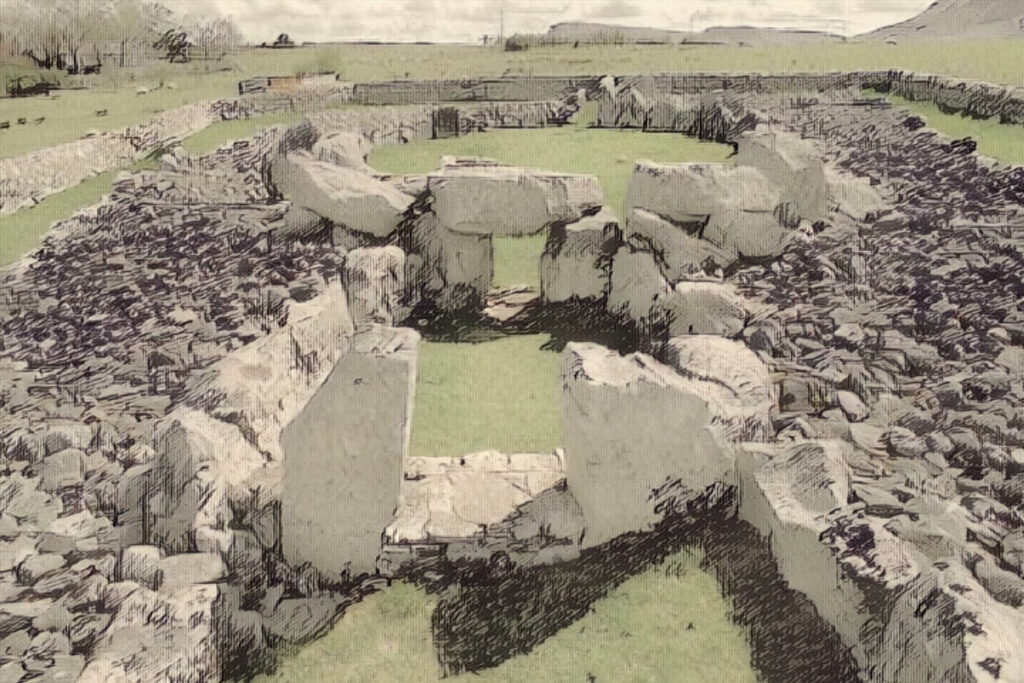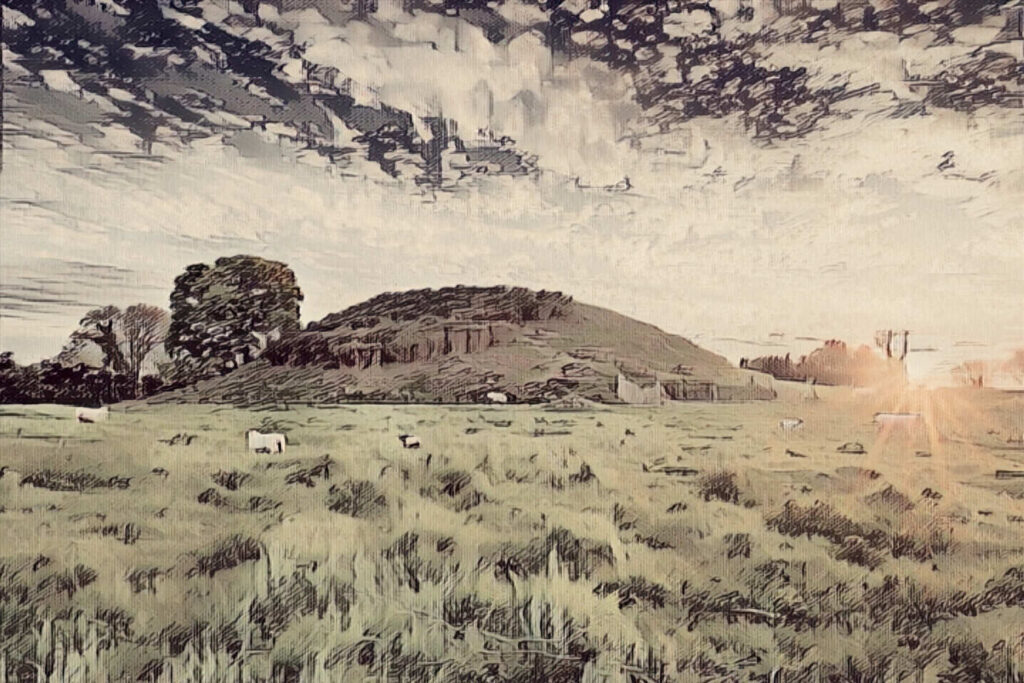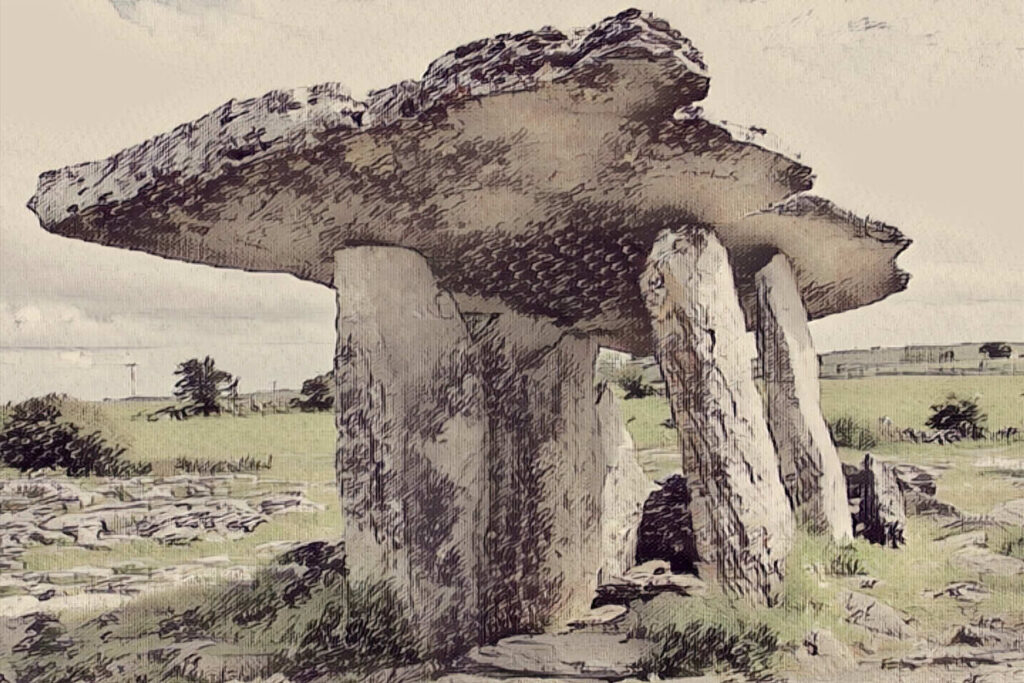The megalithic monuments in Ireland represent some of the earliest examples of monumental architecture in Europe and are generally classified into four types: court cairns, passage tombs, portal tombs, and wedge tombs. There are over 1,000 megalithic tombs recorded in Ireland, each with its own unique characteristics.
Court Tombs
Court tombs, also known as lobster-claw cairns, are rectangular chambers with a low dry-stone wall surrounding them and tall orthostats at the ends. They have an east-facing entrance court that leads into the chambers which are roofed by corbelling. The chambers may contain inhumations and cremated remains.


Passage Tombs
Passage tombs are large mounds of earth or stone with a narrow passage leading from the outside to a central chamber or chambers. Some of the most well-known examples of this type of tomb include Newgrange, Knowth, and Dowth.
Portal Tombs
Portal tombs, also known as dolmens, are located mainly in the northern half of Ireland and have a straight-sided chamber which is narrow at the rear. The entrance is marked by tall portal stones, with a single capstone resting on the portal stones on the front and sloping towards the backstone at the rear. In most cases, the tomb entrance faces east towards the sunrise, although some tombs face different directions. Examples of portal tombs include Kilmogue in County Kilkenny, Poulnabrone in the Burren, County Clare, and Knockeen in County Waterford.


Wedge Tombs
Wedge tombs, found primarily in the west and north-west of Ireland, are characterized by their sloping roof and narrowing walls at one end, producing their characteristic wedge shape. Examples of wedge tombs include the Altar Wedge Tomb near Schull in County Cork.
